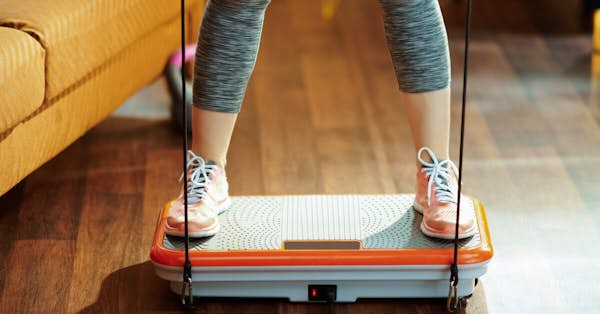
For years now, many experts have used the body mass index (BMI), a somewhat controversial metric, to predict the risk of early death.
This value requires only a person’s height and weight. It’s calculated by taking a person’s weight in pounds (or kilograms) divided by the square of height in feet (or meters). A BMI of 18.5 to 24.9 is considered healthy.
But now, new research tips the scales in a different direction, suggesting a person’s waist-to-hip ratio might be a better health and weight metric.
The Case Against BMI
Researchers argue that BMI fails to differentiate fat mass from lean mass, or subcutaneous fat (good fat) from visceral fat (bad fat).Too much body fat is problematic, but the visceral kind is more likely to raise your risk for serious medical issues. A surplus of abdominal fat is linked to heart disease, stroke, high cholesterol, and more.2 Lead researcher Irfan Khan, a medical student at the College of Medicine and Health, University College Cork, Cork, Ireland, who carried out the research with colleagues in Canada explains the study’s rationale.
He says BMI doesn’t take into account a person’s fat distribution. “It doesn’t consider where fat is stored – whether it’s accumulated around the hips or the waist. As a result, BMI doesn’t reliably predict risk of disease or mortality,” Mr. Khan says.
He further outlined the research, explaining that the team wished to find out whether waist-to-hip ratio (WHR) or fat mass index (FMI) would more reliably predict mortality across different fat distributions.
Are you curious about how this team carried out their research and their final conclusions? I know I was, so let’s take a closer look and discover why…
Body Measurements Matter
The research team analyzed data on 25,297 UK Biobank participants who had provided their health information up until their deaths. The researchers first looked to see if these people had genes linked to obesity, but also checked their body measurements, including both BMIs and waist-to-hip ratios.3 It turns out that those with a low waist-to-hip ratio were less likely to die early than their peers with higher ratios. What’s more, as a person’s waist-to-hip ratio increased, their risk of early death grew. And the link was stronger in men than in women.Mr. Khan argues that waist-to-hip ratio is a more accurate measurement because it better reflects levels of abdominal fat (AKA visceral fat), which wraps around the organs. This, in turn, increases the risk of a plethora of serious medical issues including type-2 diabetes and heart disease.
He says the waist-to-hip ratio is “a stronger and more robust measure.”
Understanding BMI Pitfalls
What’s so bad about using this common measurement of BMI as an indicator of health?Consider the burly football player who may have a body fat percentage of less than 12 percent. He may also have a BMI in the “obese” range. That’s because the BMI can’t differentiate between fat and muscle.
Health experts have long discussed the pitfalls of the BMI index. “BMI does not take waist circumference into account,” explains Dr. Leslie Heinberg, of the Cleveland Clinic.4 She offers this scenario. Person A has a higher waist circumference, carrying their weight in their abdomen, while Person B carries their weight lower in their body.
“Person A has a higher risk of metabolic and cardiovascular disease, but their identical BMI doesn’t tell that story,” Dr. Heinberg says.
Calculating Your Waist-to-Hip Ratio
Finding your waist to hip ratio is a simple process: Divide the measurement around your waist by the measurement around your hips. For instance, if your waist measures 30 inches and your hips 35 inches, you’ll divide 30 by 35. Voila - your waist-to-hip ratio is 0.86The World Health Organization states that a moderate waist-to-hip ratio is 0.9 or less in men and 0.85 or less in women.
My Takeaway
In the end, BMI and the waist-to-hip ratio are two puzzle pieces in your whole health picture. Other health indicators include blood pressure, blood sugar, heart rate and inflammation.The researchers point out that both BMI and waist-to-hip ratio are a good first step in determining if you’re at a healthy weight.
My advice? Determine if your health could benefit by shedding a few pounds. There are many strategies that can support your healthy weight journey. Healthy eating and regular exercise are a good start. And a bonus: your quality of life will improve as well.



